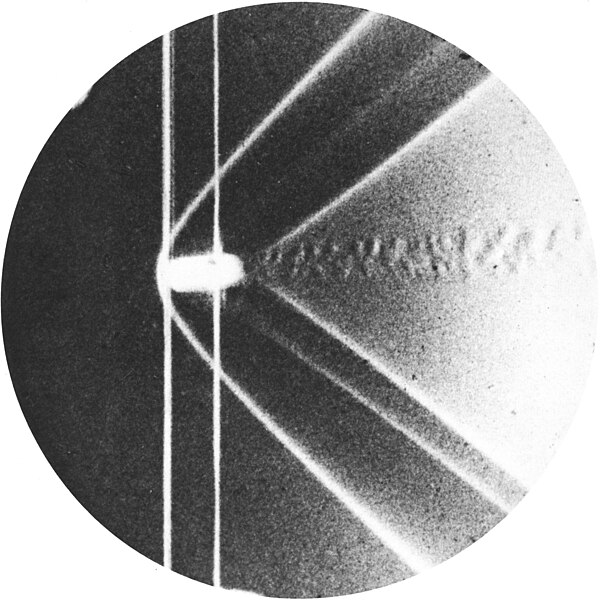In ballistics, the ballistic coefficient of a body is a measure of its ability to overcome air resistance in flight. It is inversely proportional to the negative acceleration: a high number indicates a low negative acceleration—the drag on the body is small in proportion to its mass. BC can be expressed with the units kilograms per square meter (kg/m2) or pounds per square inch (lb/in2).
Wind drift calculations for rifle bullets of differing G1 BCs fired with a muzzle velocity of 2,950 ft/s (900 m/s) in a 10 mph (4.5 m/s; 16 km/h) crosswind.
Energy calculations for 9.1 grams (140 gr) rifle bullets of differing G1 BCs fired with a muzzle velocity of 2,950 feet per second (900 m/s).
External ballistics or exterior ballistics is the part of ballistics that deals with the behavior of a projectile in flight. The projectile may be powered or un-powered, guided or unguided, spin or fin stabilized, flying through an atmosphere or in the vacuum of space, but most certainly flying under the influence of a gravitational field.
Typical trajectory graph for a M4 carbine and M16A2 rifle using identical M855 cartridges with identical projectiles. Though both trajectories have an identical 25 m near zero, the difference in muzzle velocity of the projectiles gradually causes a significant difference in trajectory and far zero. The 0 inch axis represents the line of sight or horizontal sighting plane.
Schlieren photo/Shadowgraph of the detached shock or bow shockwave around a bullet in supersonic flight, published by Ernst Mach in 1888.
Left German 7.9 mm s.S. (FMJ) and right S.m.E. ammunition beside their boat-tailed projectiles with cannelures





